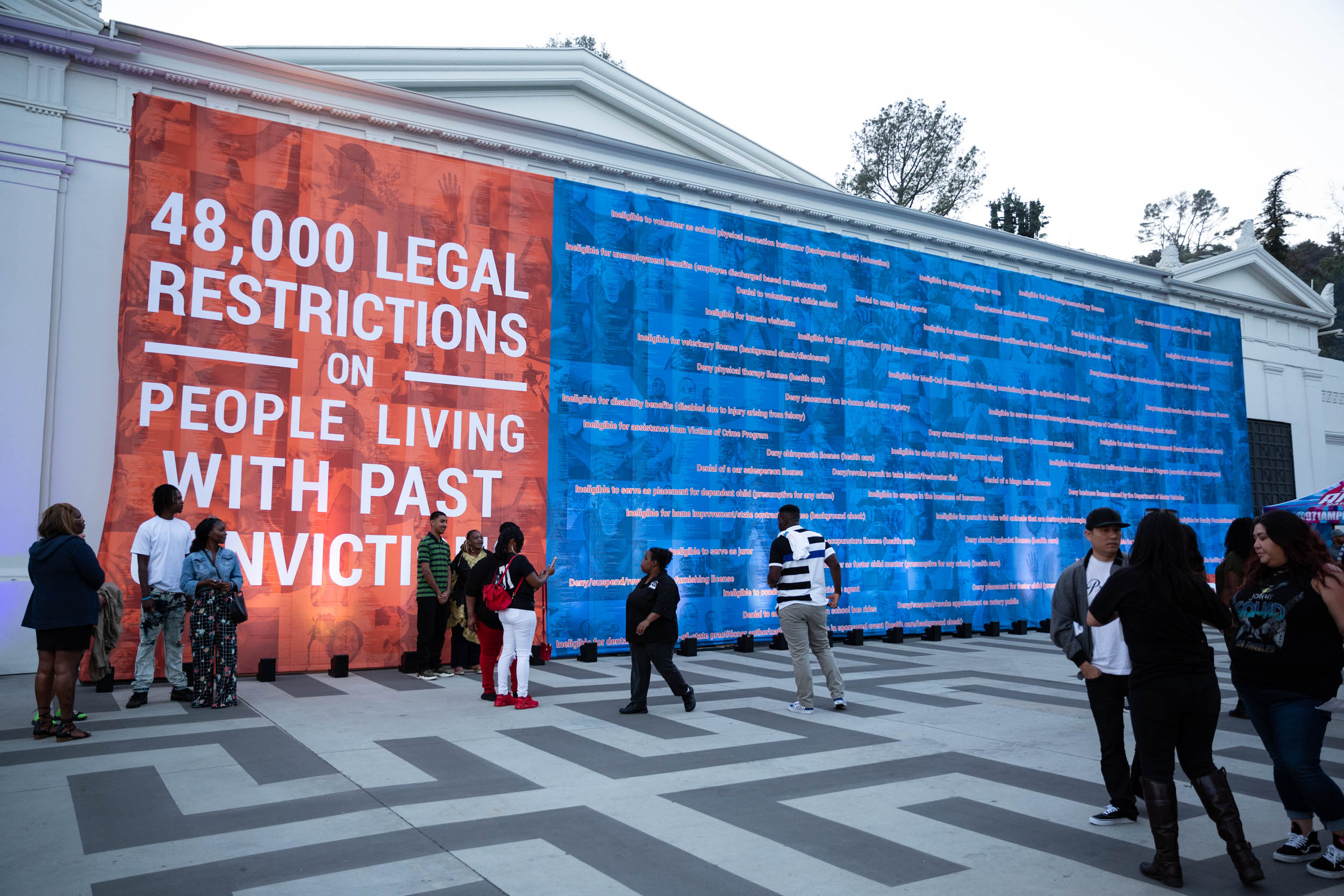
Resources
Safety, Health, and Renewal: Two recommendations to help the American Rescue Plan’s Recovery Funds promote trauma recovery and public health
Alliance for Safety and Justice submitted public comment to the U.S. Department of Treasury on its Interim Final Rule for the American Rescue Plan Act’s State and Local Fiscal Recovery Funds to recommend the inclusion of language that ensures states: 1) can explicitly use the funding to support crime victims, including for trauma recovery and other services; and 2) promote a public-health based recovery by discouraging use of the funds for expenses that undermine social determinants of health, such as incarceration.
How to realize the state’s vision for effective community supervision to STOP the cycle of crime
Alliance for Safety and Justice (ASJ) conducted an analysis of data related to Texas community supervision practices to help advance data-driven reforms that strengthen the effective use of criminal justice resources, further reduce recidivism and stabilize families. The analysis points to some signs that the probation system is not operating as safely and effectively as it could. Data demonstrates that many thousands of people sentenced to probation fail the terms of their probation and are re-incarcerated, or opt to serve time in jail instead of probation when probation should be the more effective sentence, costing taxpayers millions of dollars. Best practices in community supervision can reduce probation failures and incarceration costs, and more effectively stop the cycle of crime.
TRAUMA RECOVERY CENTERS: Addressing the Needs of Underserved Crime Survivors
The Trauma Recovery Center (TRC) model was developed to address the needs of underserved crime survivors—people who often face the biggest barriers to accessing healing services. The TRC model is specifically designed to reach those who have fallen through the cracks of traditional support services.
#STOPTHESPREAD – A survey of crisis assistance service providers
In neighborhoods across the country, trusted service providers and frontline organizations have the solutions we need for improving safety — and public health. Investing in these solutions can help us stop the spread now and build safety for all for generations to come.
Effective Reentry Partnerships for Communities
Many people returning to the community from prisons and jails will face challenges such as accessing benefits and services, including medical care; access to technology and Wi-fi to connect to services virtually; and safe housing. The corrections services continuum needs to effectively manage these rapid releases to ensure that people return to their communities with the tools they need to be safe and avoid new crimes, and to know if they are carrying the coronavirus to avoid new outbreaks.
Research Shows Incarceration Fails to Reduce Drug Problems – An Important Lesson for Ohio
Ohio is among the states most negatively impacted by the addiction crisis, with the second highest number of drug overdose deaths of any in the nation. It is critical to understand from the evidence and research that incarceration as a response to drug possession fails to address the problem of drug use.
SB 3 + HB 1 = Commonsense Safety and Sentencing Reform
Over the past decade, Ohio lawmakers have been national leaders in showing the country how to take bold, important steps to improve the operation of Ohio’s justice system to target and scale back excessively harsh and wasteful policies in best-practice ways that improve public safety overall.
Ohio Data Shows Felony & Prison Response to Addiction Fails to Lower Overdose Deaths
National research has shown that there is no relationship between the severity of a state’s approach to drug imprisonment and the level of drug problems in that state.
Senate Bill 3 Drug Sentencing Reform Supports Drug Courts’ Success
Senate Bill 3 changes low-level felony drug possession to an unclassified misdemeanor. States that have reclassified simple possession continue to have thriving drug courts, and some states have expanded their drug court programs.
Ohio Can Rely on Evidence That Reclassifying Low-Level Drug Possession Has Positive Results
Ohio is considering changes to drug sentencing laws, and policymakers should rely on a growing body of evidence that demonstrates felony convictions and incarceration to be ineffective responses to drug abuse.
Creating Model Legislative Relief for People with Past Convictions
Across the United States, popular support for criminal justice reform is at an all-time high. More and more Americans of all walks of life agree that the “tough-on-crime” era resulted in bloated, costly and ineffective corrections practices.
Crime Survivors Speak: Texas Victims’ Experiences with Recovery and Views on Criminal Justice
Because comprehensive data hasn’t been available, the public safety debate in Texas has had to rely on anecdote rather than data when it comes to the views and needs of those most negatively impacted by crime and violence: victims. To fill this gap, the Alliance for Safety and Justice commissioned a survey of Texas crime […]
Illinois Crime Victims’ Voices: The First-Ever Survey of Illinois Victims’ Views on Safety and Justice
Illinois is in the midst of reexamining the policies that have led to over-incarceration and a significant shift in its approach to public safety. For the first time in decades, criminal justice practitioners, lawmakers, and the general public are rethinking sentencing laws, prison spending, and the best ways to address crime and violence.
Crime Survivors Speak: Michigan Victims’ Views on Safety and Justice
Protecting victims of crime and promoting public safety is the most important function of Michigan’s criminal justice system. It is therefore essential to consider the experiences and perspectives of crime survivors when determining safety and justice policy.
Crime Survivors Speak: The First-Ever National Survey of Victims’ Views on Safety and Justice
The National Survey of Victims’ Views is the first-of-its-kind research on crime survivors’ experiences with the criminal justice system and their preferences for safety and justice policy.
Report: California Crime Victims’ Voices: Findings from the First-Ever Survey of California Crime Victims and Survivors
In the public debate on how to design a criminal justice system that serves the needs of California’s communities and makes them safer, the perspectives of victims and survivors of crime are essential.
Crime Survivors Speak: Florida Victims’ Views on Safety and Justice
There has never been a better time to consider the experiences and perspective of Florida’s crime victims. For the first time in a generation, Florida leaders and lawmakers are rethinking the direction of the state’s public safety and criminal justice policies.
The Trauma Recovery Center model
Trauma recovery centers are removing barriers to health and stability, healing communities and interrupting cycles of violence. Find out more about trauma recovery centers now.
Opinion: Criminal justice reform ignores victims of crime. That makes no sense.
By Lenore Anderson, The Guardian, May 21, 2015
Opinion: It’s Time Victim Services Served Those Most Affected By Crime
By Robert Rooks, Huffington Post, September 28, 2015
Toolkit: Apply for VOCA Funding: A Toolkit for Organizations Working With Crime Survivors in Communities of Color and Other Underserved Communities.
This toolkit from Equal Justice USA will give you the information you need to understand VOCA funding, eligibility, and whether your organization is ready to apply for and sustain a VOCA grant.
White Paper: Framework for a Data-Driven Crime Prevention Prosecutor’s Office
The National Network for Safe Communities, a project of John Jay College of Criminal Justice, lays out a vision for a prosecutor’s office that acts strategically to reduce crime, enhances the legitimacy of the criminal justice system, strengthens the capacity of communities to prevent and reduce crime, and reduces the unintended consequences of existing criminal […]
Brief: Latino Voices: The Impact of Crime and Criminal Justice Policies on Latinos
Latino Voices: The Impact of Crime and Criminal Justice Policies on Latinos, authored by Californians for Safety and Justice, reveals that most public safety policies don’t align with many California Latino needs and values – and highlights growing calls for change.
Brief: Breaking the Cycle of Low Level Crime
Breaking the Cycle of Low Level Crime, a brief by Californians for Safety & Justice, highlights some key local innovations that, if adapted to scale, could replace old ways of doing business with improved public safety, reduced cycles of crime and increased cost-savings.
Report: Illinois State Commission on Criminal Justice and Sentencing Reform Final Report: Part I
The Illinois State Commission on Criminal Justice and Sentencing Reform was established to review the State’s current criminal justice and sentencing structure, and the use of alternatives to incarceration, and make recommendations for amendments to state law that will reduce the State’s current prison population by 25% by 2025. This report by the commission presents a set of fourteen foundational recommendations needed in order for the State to reach its goal.
Report: 10,000 Fewer Michigan Prisoners: Strategies to reach the goal
10,000 Fewer Michigan Prisoners: Strategies to reach the goal, released by Citizens Alliance on Prisons and Public Spending, examines the key factors that led to an increase in Michigan’s prison population and recommends a list of policy changes grounded in data and research.
Toolkit: The Victims of Crime Act and the Need for Advocacy
In fiscal year 2015 the U.S. Congress approved a federal cap of $2.3 billion for victim services under the federal Victims of Crime Act (VOCA). The Victims of Crime Act and the Need for Advocacy toolkit, prepared by Californians for Safety and Justice, offers an overview of VOCA and provides advocacy tools to bring funding to under-resourced providers and communities.
Tool: The Prison Population Forecaster
The Prison Population Forecaster can estimate the effect, by state, of policies that aim to reduce prison admissions and length of stay for the most common types of offenses.

Alliance for Safety and Justice is a 501(c)(3) non-profit organization.































